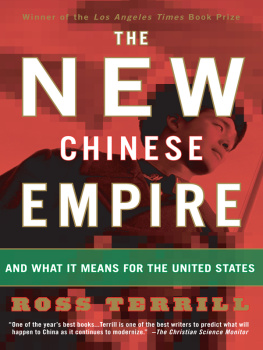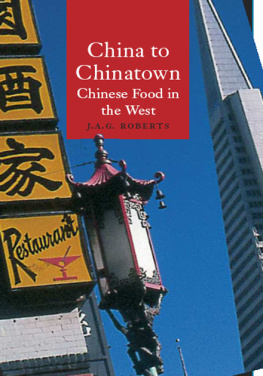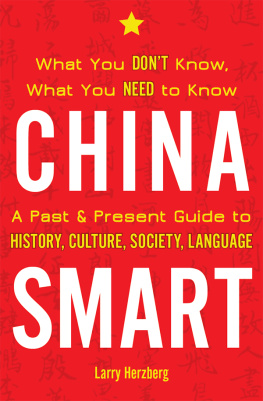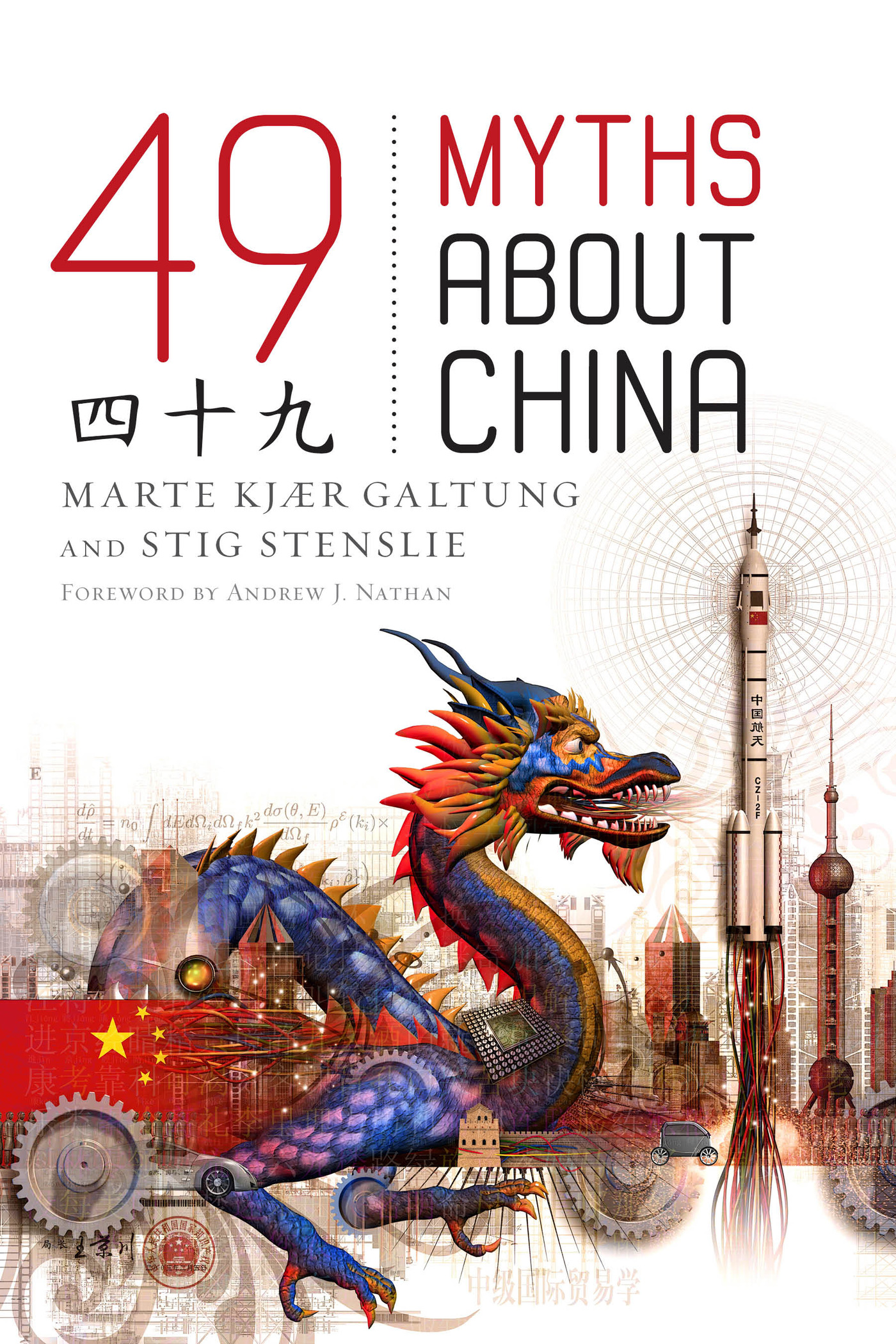49 Myths about China
Marte Kjr Galtung and Stig Stenslie
Foreword by Andrew J. Nathan
ROWMAN & LITTLEFIELD
Lanham Boulder New York London
Published by Rowman & Littlefield
A wholly owned subsidiary of The Rowman & Littlefield Publishing Group, Inc.
4501 Forbes Boulevard, Suite 200, Lanham, Maryland 20706
www.rowman.com
Unit A, Whitacre Mews, 26-34 Stannery Street, London SE11 4AB, United Kingdom
Copyright 2015 by Rowman & Littlefield
All rights reserved. No part of this book may be reproduced in any form or by any electronic or mechanical means, including information storage and retrieval systems, without written permission from the publisher, except by a reviewer who may quote passages in a review.
British Library Cataloguing in Publication Information Available
Library of Congress Cataloging-in-Publication Data
Galtung, Marte Kjr, 1976
[49 myter om Kina. English]
49 myths about China / Marte Kjr Galtung and Stig Stenslie.
pages cm
Includes bibliographical references and index.
ISBN 978-1-4422-3622-6 (cloth : alkaline paper) ISBN 978-1-4422-3623-3 (electronic)
1. ChinaMiscellanea. I. Stenslie, Stig. II. Title. III. Title: Forty-nine myths about China.
DS706.G3413 2015
951dc23
2014024511
 TM The paper used in this publication meets the minimum requirements of American National Standard for Information Sciences Permanence of Paper for Printed Library Materials, ANSI/NISO Z39.48-1992.
TM The paper used in this publication meets the minimum requirements of American National Standard for Information Sciences Permanence of Paper for Printed Library Materials, ANSI/NISO Z39.48-1992.
Printed in the United States of America
Foreword
Andrew J. Nathan
The more important China becomes to us, the harder it seems to be to grasp its reality. Everyone is his own China expert today, thanks to the surge in Western businessmen, students, and tourists traveling to that country. Along with more experts, we have more confusion. Now, along come two highly qualified, learned, and entertaining Norwegian experts to set the rest of us straight.
Norway might seem an unexpected source of expertise on Chinabut such a view would express a myth about Norway: that it is a remote, inward-looking place. In fact, as a geographically large, but demographically small, and highly prosperous country, heavily dependent on oil exports to the rest of the world, Norway has a large stake in global stability. It is a staunch American ally in NATO and maintains a sophisticated, elite defense establishment. It has a cosmopolitan culture and integrates refugees from around the world into its citizenry. Norway takes a strong interest in trends all around the world, including in China, and its Peace Prize Committee (which is not part of the government) has awarded two peace prizes to people from ChinaHis Holiness the Dalai Lama (who was born in Tibet but fled into exile in 1959) in 1989 and rights advocate Liu Xiaobo in 2010.
So it should not be surprising that Norways foreign policy and security establishment keeps a close eye on global affairs. For a small country, security policy is less about hardware and more about understanding other countries languages, cultures, and histories in order to learn what drives their policies and how they might best be either accommodated or resisted. Marte Kjr Galtung and Stig Stensliemembers of the Norwegian Defence Staffdraw on their humanistic training in anthropology and political science, as well as on their area-studies expertise, to give us a brisk, pointed introduction, in the form of short commentaries on prevalent myths, to what makes China tick. In doing so they speak for themselves, not for their government. But their insights reflect the fact that they come from a country that needs an unencumbered view of the world and that neither competes with China nor depends on it, but which takes seriously the implications of its rise.
Along with the Arab world, China has often served as the classic Other for an ever-changing West struggling to define and redefine itself. Coming from the ambitious but insecure commercial-military power of thirteenth-century Venice, Marco Polo portrayed China as infinitely affluent and powerful. For the Enlightenment thinker Franois-Marie Arouet Voltaire, as he argued against religious obscurantism, China was the home of secular rationality. For Adam Smith, during the early industrial revolution, China was a warning example of economic stagnation. For Georg Wilhelm Friedrich Hegel, writing in the Napoleonic era, China exemplified a country without heroes, revolution, or progress, relegated to a status outside history. Over the years we have seen China as poor or rich, superstitious or rational, barbarous or civilized, passive or warlike. In effect, the West has defined its own identity by creating an image of China as its imaginary opposite.
Today, we are in a periodnot the firstof supposed Western decline. The West feels disunited, indecisive, inefficient, and weak. Portrayals of a rising China as united, decisive, efficient, and strong give concrete meaning to those characteristics.
Not that China is not really rising. Its gross domestic product (GDP) has increased by doubt digits for three decades, and its military budget has gone up along with it. It asserts its core national interests with increasing vigor. The question is, however, whether Chinas rise is really equivalent to the Wests declineits natural accompaniment or even its cause. When we see China as a threat, are we seeing China as it really is?
The so-called China threat is such a shape-shifterto borrow a phrase from Karl Marx, a specter haunting the postCold War world of American dominancethat it is hard to pin down what China threat theorists really fear. One can summarize the discourse as expressing three kinds of worries, sometimes in combination:
Economic: China will become the worlds biggest economy; it will soak up all our technology and flood us with products; its currency will become the worlds reserve currency; it will set standards for technology and consumer products; it will force the whole world to adopt the Chinese way of doing business.
Military: Chinas economic growth will cause it to have more and more military power to pursue its existing territorial claims and expand its regional influence, while also expanding its strategic interests overseas, such as workers, oil fields, investments, and so on, and it will find itself constrained to project military power to protect these interests. It will dominate first its own region and then the world.
Normative: The success of the Chinese model will bring an end to the soft-power dominance of democracy and human rights. China will rewrite existing international norms on free trade, human rights, humanitarian intervention, development assistance, and so on, and will use its financial clout to influence not only domestic but foreign media, academia, and public culture.
There are two ways to evaluate such fears. First, one can project existing trends into the futurewhat we might call on-trajectory forecasting. This kind of prediction is correct most of the time because most of the time trends usually do continue to develop in the same direction. But such a forecast is guaranteed eventually to be wrong because sooner or later history surprises us.
The second approach is to think about all the unlikely ways in which things could go off trajectory and try to identify the most likely unlikely scenarios. This type of prediction is wrong most of the time but sooner or later has a good chance of being correct because, in the long run, the only sure thing is the occurrence of something unexpected.
Next page









 TM The paper used in this publication meets the minimum requirements of American National Standard for Information Sciences Permanence of Paper for Printed Library Materials, ANSI/NISO Z39.48-1992.
TM The paper used in this publication meets the minimum requirements of American National Standard for Information Sciences Permanence of Paper for Printed Library Materials, ANSI/NISO Z39.48-1992.